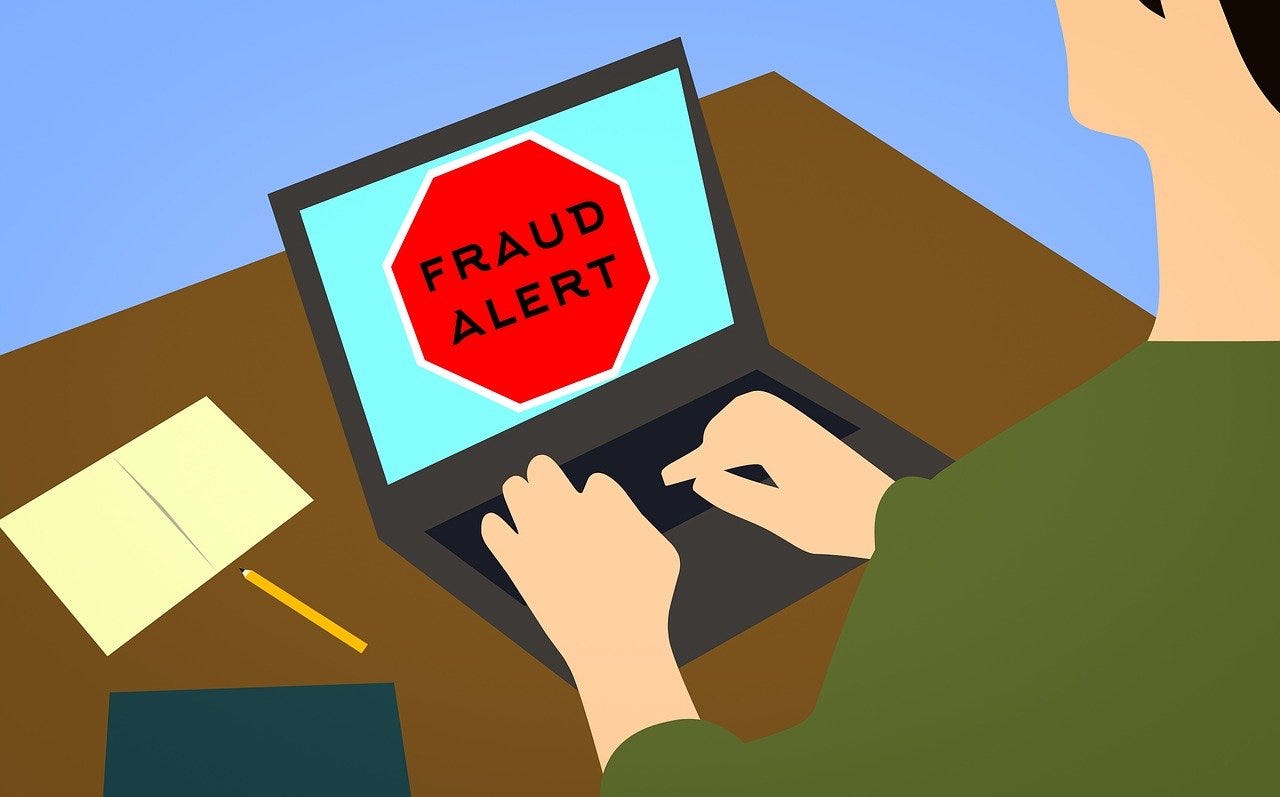Here is A Step-by-Step Approach to Fraud Awareness at Home
Scams are getting harder to recognize, and many families aren’t sure how to talk about them. This post shares practical ways to start clear, supportive conversations about fraud and staying safe.

We don’t like to think we could fall for a scam, but the truth is, it’s happening to more and more people of all ages. In 2024, Canadians lost over $638 million to fraud, according to the Canadian Anti-Fraud Centre. That number is staggering, and it doesn’t even include all the unreported cases. Most victims stay silent because they’re embarrassed, or unsure of what to do next.
But here’s the thing: fraud CAN happen to anyone. Scammers are getting smarter every day, and they’re even using AI tools. The best defense isn’t just strong passwords or privacy settings (though those are important too). We need to talk about it with family and friends, too.
90% of Canadians Have Been Targeted by a Scam
A recent Scotiabank survey found that nearly 9 in 10 Canadians have been targeted by a scam. Young adults aged 18–34 are actually the most likely to fall for one, but older adults are often the least likely to take preventative steps.
Spotting the Red Flags
Most scams boil down to this: someone wants your money or your personal info. They’ll use emotional manipulation, fake urgency, or even impersonate someone you know.
Here are some signs to watch for:
You’re pressured to act fast, “limited time offer” or “your account is at risk”
The promise of a big payout or return on investment, especially in crypto
You’ve “won” a prize, but need to pay a fee or share personal info to claim it
Messages from “family” asking for money (common in **grandparent scams**)
Random links in emails or texts, even from familiar-looking contacts
If it feels off, trust your instincts.
Here’s a great video from YouTuber ThioJoe going over some of the scams in 2025 to watch out for:
ThioJoe outlines new scam tactics to watch for in 2025, including:
AI voice impersonation to fake emergency calls from loved ones
Fake remote job offers that lead to stolen money or personal data
Malicious QR codes on signs and flyers
AI-generated fake identities used in catfishing scams
Account recovery abuse to hijack your accounts
Scam ads even on trusted websites
Deepfake videos promoting fake investments
He urges viewers to stay skeptical, use two-factor authentication (2FA/MFA), and stay informed about current and evolving scams.
How to Make Your Family Scam-Savvy
Talking about fraud can feel awkward, especially if someone’s been targeted before. But keeping it casual and supportive makes a big difference.
Here are some ways to make these conversations easier:
Keep it judgment-free: Scammers trick people all the time, it’s not about intelligence or age.
Share your own stories: If you’ve almost been scammed (or have been), talk about it. You’re not alone.
Role-play scenarios or bring up examples: Practice what a scam call might sound like, and how someone might respond.
Bring it up regularly: Make it part of your usual family chats, like discussing the weather or weekend plans.
Have a Plan
It doesn’t take much to make your household fraud-aware. Try these tips:
Create a secret code word that only close friends or family know, great for confirming identities in emergencies. If your family member or friend claims to be calling in an urgent situation where they supposedly need money, ask them for the secret code word to confirm it’s them. If that person doesn’t know it, then that person isn’t who they say they are. Give them nothing and hang up. Then call the person for real to make sure they’re okay, and let them know what happened.
Slow down and verify before acting on a suspicious call, text, or email.
Don’t overshare online. Even the names of your pets and favourite teams can help criminals guess passwords.
Use strong, unique passwords (and a password manager), and two-factor authentication (2FA/MFA) is a must. If you can remember your online passwords, they’re not secure or worth using. It’s not just hackers randomly guessing anymore. They’re using AI in brute force attempts with millions of accounts every day.
Tighten privacy settings on your social media accounts and apps.
Help loved ones check their accounts if they’re struggling with paperwork or online tools.
Enable fraud alerts from your bank or credit card provider.
Add a trusted contact who can help if something goes wrong, and never be afraid to call them. They’d rather you call them than not.
If Someone Does Get Scammed
Getting scammed isn’t just a financial loss; it can hurt emotionally, too. People often feel embarrassed, ashamed, or like they’ve let someone down. That’s why it’s so important to respond with empathy.
Reassure your loved one that this happens to many people, and that the goal now is to take action, not place blame.
Here’s what to do:
1. Collect all evidence: texts, emails, receipts, screenshots
2. Contact the bank or financial institution right away
3. Report it to local police and get a case number
4. Report it to the Canadian Anti-Fraud Centre.
Final Thoughts
Scams aren’t going away, but by having conversations about fraud, we can help protect ourselves and the people we care about.
It doesn’t have to be formal or scary. It means regular check-ins, open chats, and a little planning can go a long way.
Resources
Government of Canada – Protect Yourself from Fraud
Support My Work
Thank you so much for reading this blog post! Please consider supporting my work directly, using Buy Me a Coffee! Your support makes my work possible.


